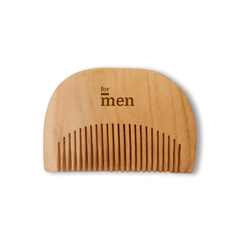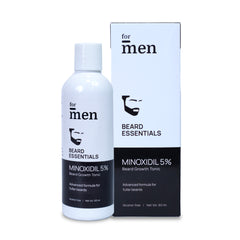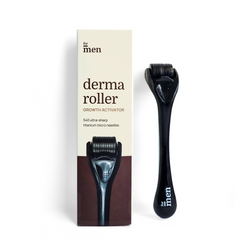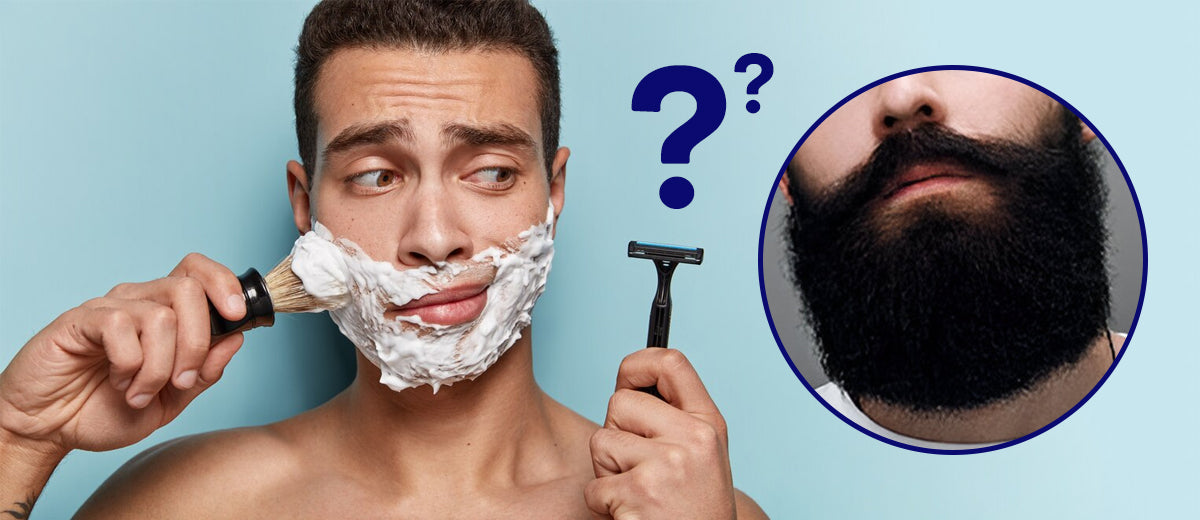What is Alopecia Barbae: Causes, Signs, Symptoms and Treatment
Evidence Based
All the information in this blog post is accurate, trustworthy, scientifically based and has been written and fact-checked by our experts and doctors.
Our licensed nutritionists and dietitians are committed to being objective, unbiased and honest, presenting all sides of the argument.
This article includes scientific references in brackets, which are clickable links to research papers from reputable academic organizations.

Alopecia Barbae is an autoimmune condition that causes patchy hair loss in the beard area, including your neck, jaw, and cheeks. It's a specific type of alopecia areata that specifically affects the beard.
It's often misdiagnosed or underdiagnosed due to its similarity to other beard conditions like fungal infections or scarring alopecia. Up to 20% of people with Alopecia Areata may experience Alopecia Barbae.
Causes and Risk Factors for Alopecia Areata and Alopecia Barbae:
1. Genetic:
- Having a family history of alopecia areata or other autoimmune diseases increases your risk.
- Certain genes contribute to susceptibility.
2. Autoimmune:
- Individuals with other autoimmune diseases like psoriasis, thyroid disease, or vitiligo are more likely to develop alopecia areata.
- The exact mechanism is unclear, but an overactive immune system mistakenly attacks hair follicles.
3. Environmental:
- Stressful life events or physical trauma can trigger alopecia areata in predisposed individuals.
- Some infections might be linked to its onset, though the evidence is not conclusive.
4. Other Factors:
- Age: Onset can occur at any age, but childhood and young adulthood are common times.
- Certain medications can have hair loss as a side effect.
It's important to remember that these are just risk factors, and not everyone with them will develop alopecia areata. Additionally, researchers are still investigating the exact causes and triggers of this condition.
For women experiencing facial hair loss, the specific risk factors would depend on the type of alopecia diagnosed.
Symptoms of Alopecia Barbae:
- Sudden Appearance of Smooth, Round Bald Patches in the Beard: This is the most prominent symptom. Patches typically begin small and may gradually grow larger or merge with other patches.
- Location: Patches can appear anywhere on the beard, including the cheeks, jawline, and neck.
- Hair Loss Patterns:
- Alopecia Barbae: Patchy hair loss confined to the beard area.
- Alopecia Universalis: Complete hair loss on the entire scalp and body, including the beard.
- Alopecia Totalis: Complete hair loss on the scalp, but eyebrows and eyelashes remain.
- Ophiasis: Band-like hair loss across the scalp often affecting the beard area.
- Other Potential Symptoms:
- Slight itching or burning sensation before hair loss
- Short, thin hairs around the bald patches ("exclamation mark hairs")
- Brittle or discoloured hairs
- Nail changes like pitting or dents
Alopecia Barbae is not contagious. Symptoms can vary from person to person in severity and progression. Early diagnosis and treatment are crucial for potentially increasing hair regrowth chances.
Treatment Options for Alopecia Barbae:
The specific treatment for alopecia barbae depends on the severity and extent of hair loss, individual factors, and the dermatologist's assessment.
Commonly Used Treatments Include:
- Topical Corticosteroids: Creams or ointments applied directly to the affected areas to reduce inflammation and suppress immune system activity.
- Intralesional Injections: Corticosteroids injected directly into the bald patches to target inflammation.
- Minoxidil (Rogaine): Topical solution applied to stimulate hair growth, though evidence for its effectiveness in alopecia barbae is limited.
- Immunotherapy: Topical solutions like diphenylcyclopropenone (DPCP) to trigger controlled inflammation and stimulate hair growth, but potential side effects like allergic reactions require careful monitoring.
- Phototherapy: Ultraviolet light treatment to suppress the immune system and promote hair growth.
- Platelet-rich Plasma (PRP) Therapy: Injections of a concentrated platelet solution derived from the patient's blood, aiming to stimulate hair growth, but research on its effectiveness for Alopecia Barbae is ongoing.
- Surgical Options: Microneedling or hair transplantation might be considered in severe cases, but these are typically not first-line therapies.
No single treatment works for everyone, and some treatments may have side effects. Early diagnosis and treatment are crucial for potentially increasing hair regrowth chances. Hair regrowth may not be complete in all cases. Addressing underlying stress or other contributing factors might be beneficial. Unfortunately there are no proven home remedies either for this condition.
Also Read the Articles:
Disclaimer: The information provided on this page is not a substitute for professional medical advice, diagnosis, or treatment. If you have any questions or concerns about your health, please talk to a healthcare professional.

 Evidence Based
Evidence Based






Leave a comment